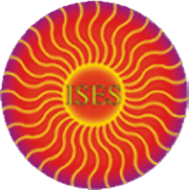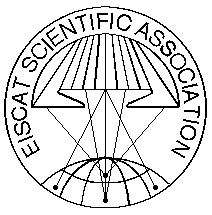
November 28 - December 02, 2011 - Namur, Belgium
Space Weather Effects on the Earth's Thermosphere, Ionosphere and Plasmasphere
| Session: | Session 4B: Space Weather Effects on the Earth's Thermosphere, Ionosphere and Plasmasphere (06) |
| Type: | |
| Date: | Thursday, December 01, 2011 |
| Time: | 09:00 - 12:30 |
| Chair: | Michael Danielides & Ioanna Tsagouri |
| Co-chair: | |
| Remarks: |
Introduction: 09:00-09:05
Splinter Wrap-up: 10:15-10:30 Coffee Break & Poster Session: 10:30-11:15 Summary and Close: 12:25-12:30 |
| Seq | Time | Title | Abs No | ||||
|
09:00 Introduction |
|||||||
| 1 | 09:05 |
>From ionospheric Climate to ionospheric Weather Modeling: the new Path
Radicella, Sandro M. ITALY A brief introduction about the different types of ionospheric models is given describing their advantages and limitations. The evolution from a "climate description" to a "weather specification" of the ionosphere is discussed particularly in relation to Space Weather. Different ways to go from ionospheric "climate" to ionospheric "weather" based on the assimilation or ingestion of various types of data is described. Recent results will be illustrated that show the advances reached using this approach. |
Invited | ||||
| 2 | 09:25 |
EOF Analysis applied to Australian Regional Ionospheric total Electron Content,based on GPS Observations and SCHA
Bouya, Zahra1; Terkildsen, Mike2; Francis, Matthew2 1Bureau of Meteorology, AUSTRALIA; 2Bureau of Meteorology, IPS Radio and Space Services, AUSTRALIA
This paper describes the application of Empirical Orthogonal Function (EOF) analysis to characterise spatial and temporal variation in Australian regional ionospheric Total Electron Content (TEC). Keywords: EOF, Regional, SCHA, GPS, Australia . |
|||||
| 3 | 09:40 |
Upgrading the Semi-Empirical Drag Temperature Model (DTM) in the Framework of the FP7 Project ATMOP
Bruinsma, Sean CNES, FRANCE
Atmospheric density models are used in satellite orbit determination and prediction programs to compute the atmospheric drag force, as well as in upper atmosphere studies. They represent temperature and (partial) density as a function of altitude, latitude, local solar time, day-of-year, and parameters related to the state of atmospheric heating due to solar EUV emissions and solar wind. The S10.7 index was selected after a thorough analysis to represent the heating by EUV, whereas new geomagnetic activity indices are being constructed and tested within ATMOP. These indices have a higher temporal resolution than Ap/Kp, namely 15 minutes instead of 3 hours. |
Invited | ||||
| 4 | 10:00 |
Modelling a higher Time Resolution Proxy for Geomagnetic Activity
Aylward, Alan1; Spain, Timothy2; Lathuillere, Chantal3; Menville, Michel4 1University College London, UNITED KINGDOM; 2UCL, UNITED KINGDOM; 3Institut de Plantologie et d'Astrophysique de Grenoble, FRANCE; 4Latmos, Guyancourt, FRANCE
Previous work with the University College London CTIP (Coupled
Thermosphere Ionosphere and Plasmasphere) model has shown that time
varying input of geomagnetic forcing produces wave activity in the
thermosphere and affects the dynamics of the neutral atmosphere down to
the equator and beyond. |
|||||
| 5 | 11:15 |
On Progress with the AMISR System - A Unique Phased ISR
Semeter, Joshua Boston University, UNITED STATES The Advanced Modular Incoherent Scatter Radar (AMISR) is a modular, transportable, ISR funded by the National Science Foundation. The combination of electronic beam steering, remote operation, and distributed power provides an unprecedented degree of flexibility in experiment design. For instance, pulse-by-pulse steering means that information can be accumulated simultaneously from a dense grid of beams, enabling the construction of three-dimensional images of densities, temperatures, and flows in the ionosphere. The AMISR installations can also be diverted periodically to some standard configuration without impacting other planned experiments. Such a "low duty cycle" mode was run during the entire IPY, providing zenith profiles of the ionospheric state at 10 min intervals for the entire year. In this talk I will review significant science results from the first 5 years of the AMISR project, and discuss the potential of the emerging global AMISR network as a bonafide space weather diagnostic. |
Invited | ||||
| 6 | 11:35 |
EISCAT-3D: a versatile ground-based Instrument for Space Weather Monitoring
Grydeland , Tom NORUT, NORWAY In the future, EISCAT will build the next generation incoherent scatter radar, which will provide comprehensive 3D monitoring of the atmosphere and ionosphere above Northern Fenno-Scandinavia. The EISCAT_3D radar system will consist of multiple phased arrays, using the latest digital signal processing to achieve ten times higher temporal and spatial resolution than the present radars. The European Strategy Forum on Research Infrastructures (ESFRI) selected EISCAT_3D for the Roadmap 2008 for Large-Scale European Research Infrastructures for the next 20-30 years. The facility will be built as a modular system with the construction start by 2015. EISCAT_3D will be a volumetric radar capable of imaging an extended spatial area with simultaneous full-vector drift velocities, having continuous operation modes, short baseline interferometry capability for imaging sub-beamwidth scales, real-time data access for applications and extensive data archiving facilities. The design of the antenna arrays will be modular at different scales allowing for mass-production of the components. Some arrays will be very large, in the scale of tens of thousands of individual antenna elements. The receiver arrays will be located at 50-150 km distance from the illuminators, and some smaller arrays closer by to support continuous interferometric observations. The total system will comprise ?100,000 elements. The actual radar sites have to be carefully chosen. This new large-scale European research infrastructure has applications in a wide range of European research areas including Space Weather monitoring and technology solutions supporting sustainable development, well beyond atmospheric and space sciences. |
Invited | ||||
| 7 | 11:55 |
Calibrated Polarization Parameters of the Auroral red Line in Hornsund
Lilensten, Jean1; Barthélémy, Mathieu2; Amblard, Pierre-Olivier3; Moen, Joran4; Rothkaehl, Hanna5; Simon Wedlund, Cyril6; Lamy, Hervé6 1CNRS, FRANCE; 2IPAG, FRANCE; 3Gipsa Lab, FRANCE; 4UiO, NORWAY; 5Polish Space Research Center, POLAND; 6BIRA, BELGIUM The thermospheric atomic oxygen red line is one of the brigthest in the auroral spectrum. It has been shown to be polarized. This polarization depends on the auroral activity. The first measurements were performed in polar conditions with a possible contribution of light pollution. In the winter 2010 / 2011, it has been measured for the first time in totally clean conditions at the Polish Hornsund polar base. About 200 hours are fully useable. In this paper, we report on these measurements. We give for the first time calibrated values of the polarization degree, which is of the order of 2 to 3% in average. Its behaviour is confirmed : the polarization decreases when the auroral activity increases. However, the anticorrelation is not one to one, revealing a much more complex mechanism. The angle of polarization varies also with the auroral activity, rotating around the magnetic field line. This set of observations is a new step on the stairs to understand the thermospheric emission polarizations and make it an useable proxy for future space weather purposes. |
|||||
| 8 | 12:10 |
Wave Aspects and Signatures in the Magnetosphere-Ionosphere Coupling during active geomagnetic Conditions
Voitenko, Yuriy; De Keyser, Johan Belgian Institute for Space Aeronomy, BELGIUM We discuss waves, their signatures, and their role in the processes coupling the Earth's magnetosphere and ionosphere in auroral zones. Simultaneous observations of enhanced wave fluxes and strong particle energization during active geomagnetic periods point on causal links between waves and energetic particles. Wave activity is mostly Alfvénic, intrinsically multi-scale, and often exhibits power-law spectral distributions indicating developed turbulence. Particle energization is anisotropic, with essentially different anisotropies for electrons and ions. We show that these observational facts can be explained quantitatively in the framework of modern theory for oblique Alfvén waves. New theoretical findings and their consequences are discussed in the context of space weather research. |
|||||











